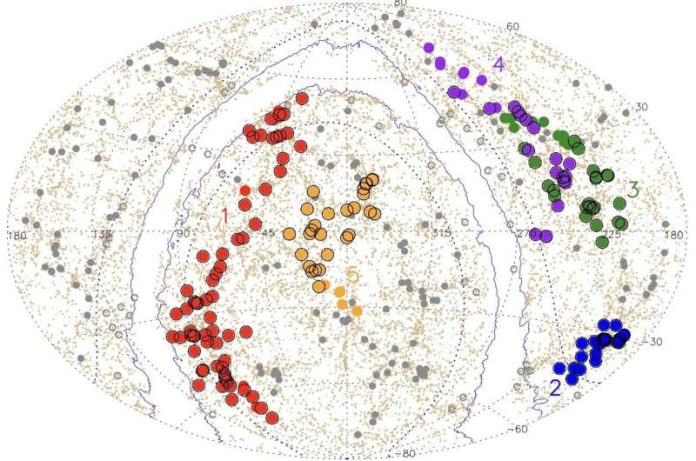
Scientists have discovered the largest known structure in the universe, a massive superstructure named Quipu. This enormous cosmic formation weighs an astonishing 200 quadrillion times the mass of the Sun and stretches over 1.3 billion light-years across.
The discovery, made by an international team of astronomers, was led by Hans Bohringer from the Max Planck Institute. The findings, soon to be published in Astronomy & Astrophysics, could reshape our understanding of the universe and help improve models of cosmic evolution.
Why Does This Matter?
The universe is made up of galaxies, galaxy clusters, and even larger cosmic structures. These superstructures influence the way we see and measure the universe, affecting things like the expansion of space, the Cosmic Microwave Background (CMB), and the distribution of matter.
According to the researchers, studying Quipu and other large cosmic formations can:
- Improve our understanding of how galaxies evolve
- Refine our models of the universe’s structure
- Enhance the accuracy of key measurements, like the Hubble constant
What Is Quipu?
Quipu is part of a category of superstructures, which are enormous formations made up of galaxy clusters and superclusters. These are among the biggest and most mysterious objects in the universe.
The researchers found Quipu along with four other superstructures, which together contain:
- 45% of the known galaxy clusters
- 30% of the galaxies
- 25% of the universe’s matter
- 13% of the total cosmic volume
How Was It Found?
To detect Quipu, scientists used data from the CLASSIX Cluster Survey, which maps cosmic structures using X-ray emissions. These emissions come from hot gases within galaxy clusters, making it easier to identify the densest regions of the universe.
By analyzing X-ray data from telescopes in Chile, the team pinpointed Quipu’s location and size, confirming its presence as the largest structure ever observed.
How Does Quipu Affect the Universe?
Because Quipu is so massive, it alters the way we see the cosmos. It influences some of the most fundamental aspects of astronomy, including:
- The Cosmic Microwave Background (CMB)
- The CMB is leftover radiation from the Big Bang, often called the universe’s “baby picture.”
- Large superstructures like Quipu warp the CMB’s signal, causing fluctuations that make it harder to interpret.
- The Hubble Constant (which measures how fast the universe is expanding)
- While galaxies move apart due to cosmic expansion, they also have local motions caused by gravitational forces.
- The enormous mass of Quipu affects these motions, making it more difficult to calculate the true rate of expansion.
- Gravitational Lensing
- Quipu’s mass is so large that it bends light from distant objects, distorting telescope images.
- This effect must be corrected to accurately measure distant galaxies.
A Glimpse into the Future
Despite their size, these superstructures won’t last forever. According to the study, Quipu will eventually break apart into smaller galaxy clusters due to cosmic evolution.
But for now, superstructures like Quipu play a crucial role in shaping the universe. Researchers plan to study their influence on galaxy evolution and how they might reveal hidden details about the universe’s formation.
“At present, they are special cosmic entities that deserve our full attention,” the scientists conclude.
The research findings can be found in arXiv.
Copyright © 2025 Knowridge Science Report. All rights reserved.



